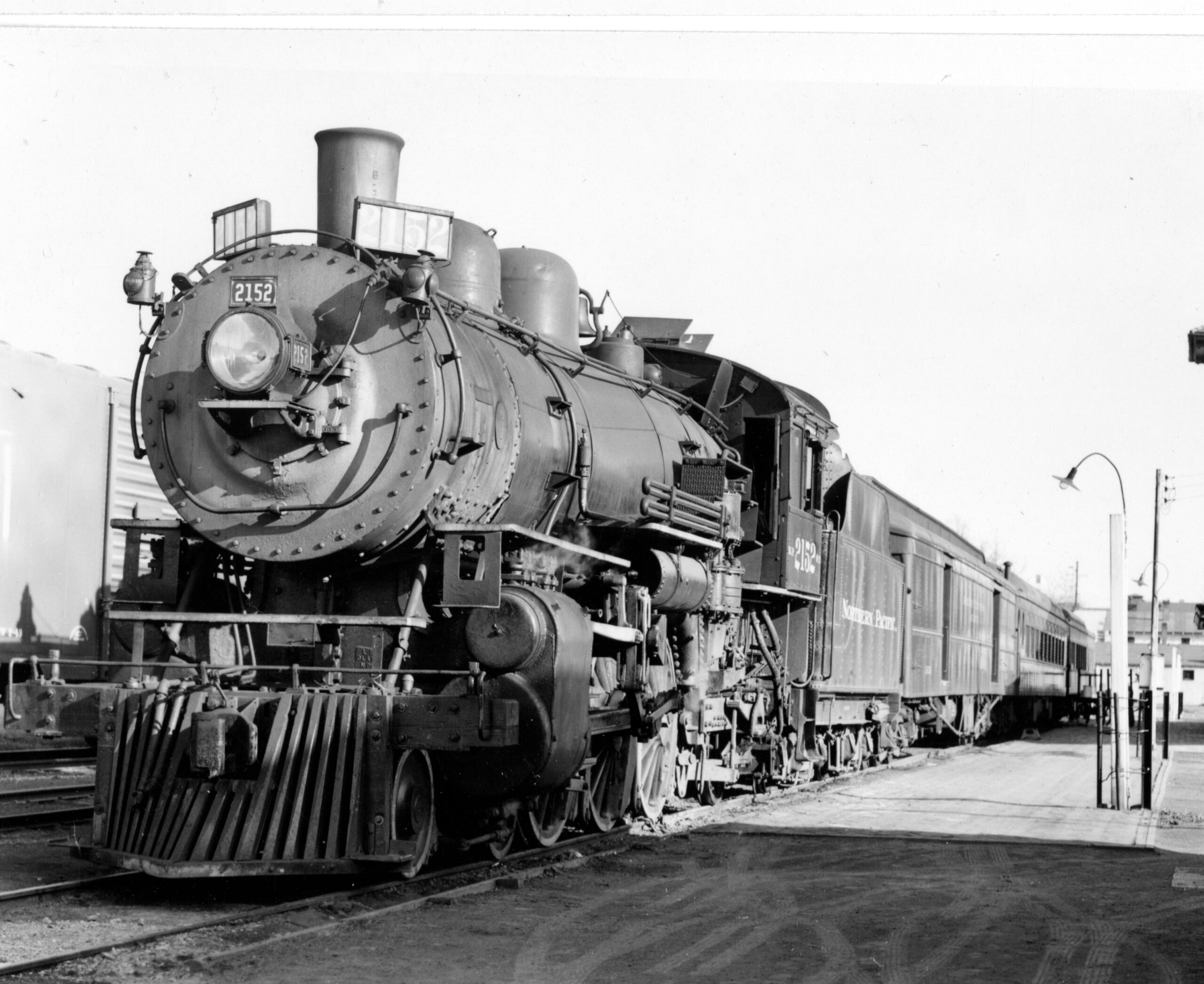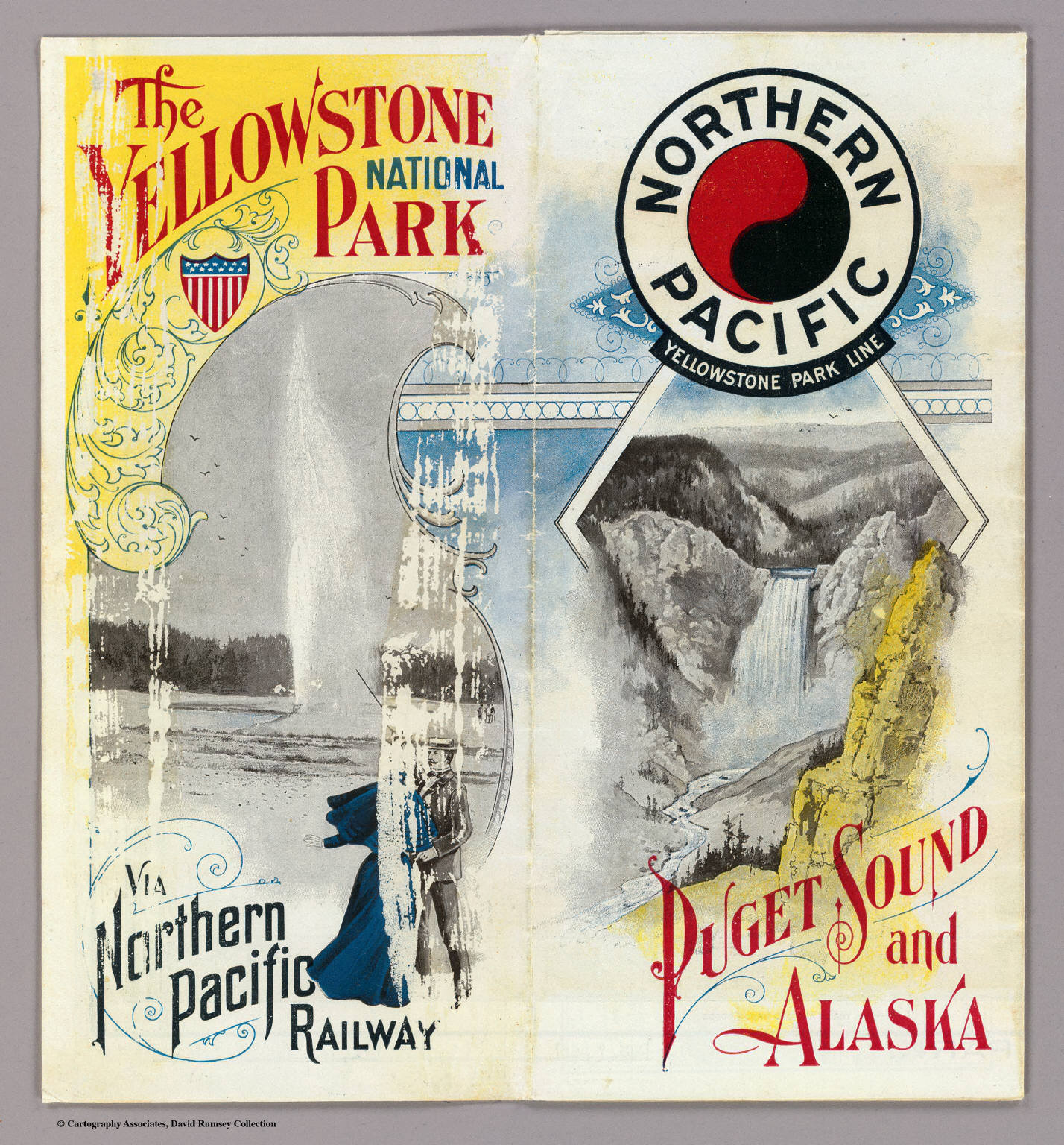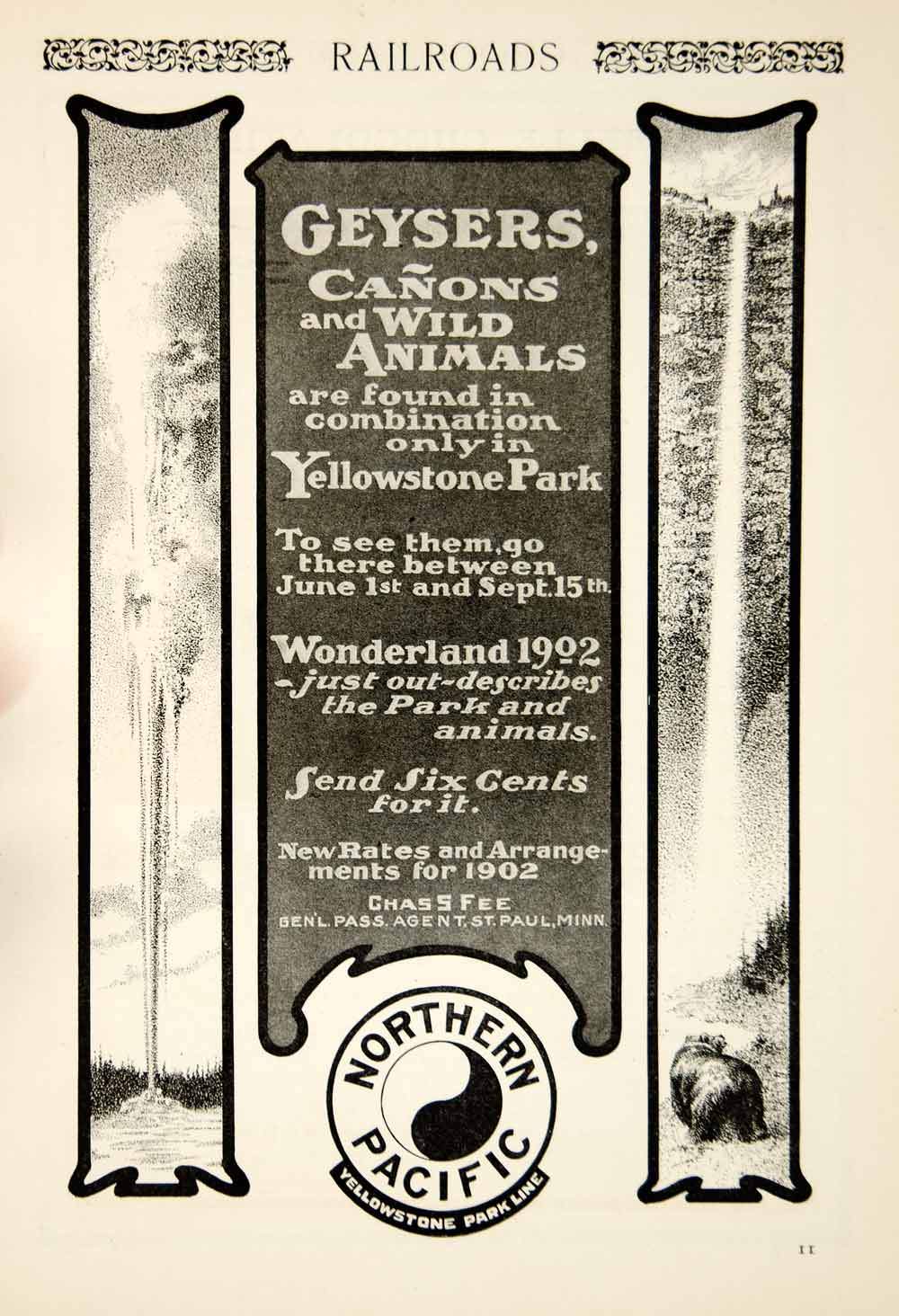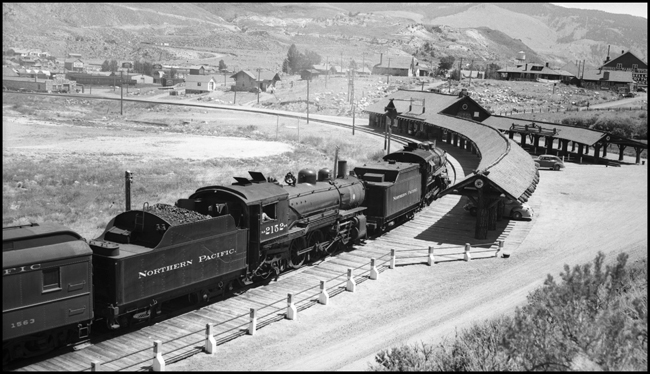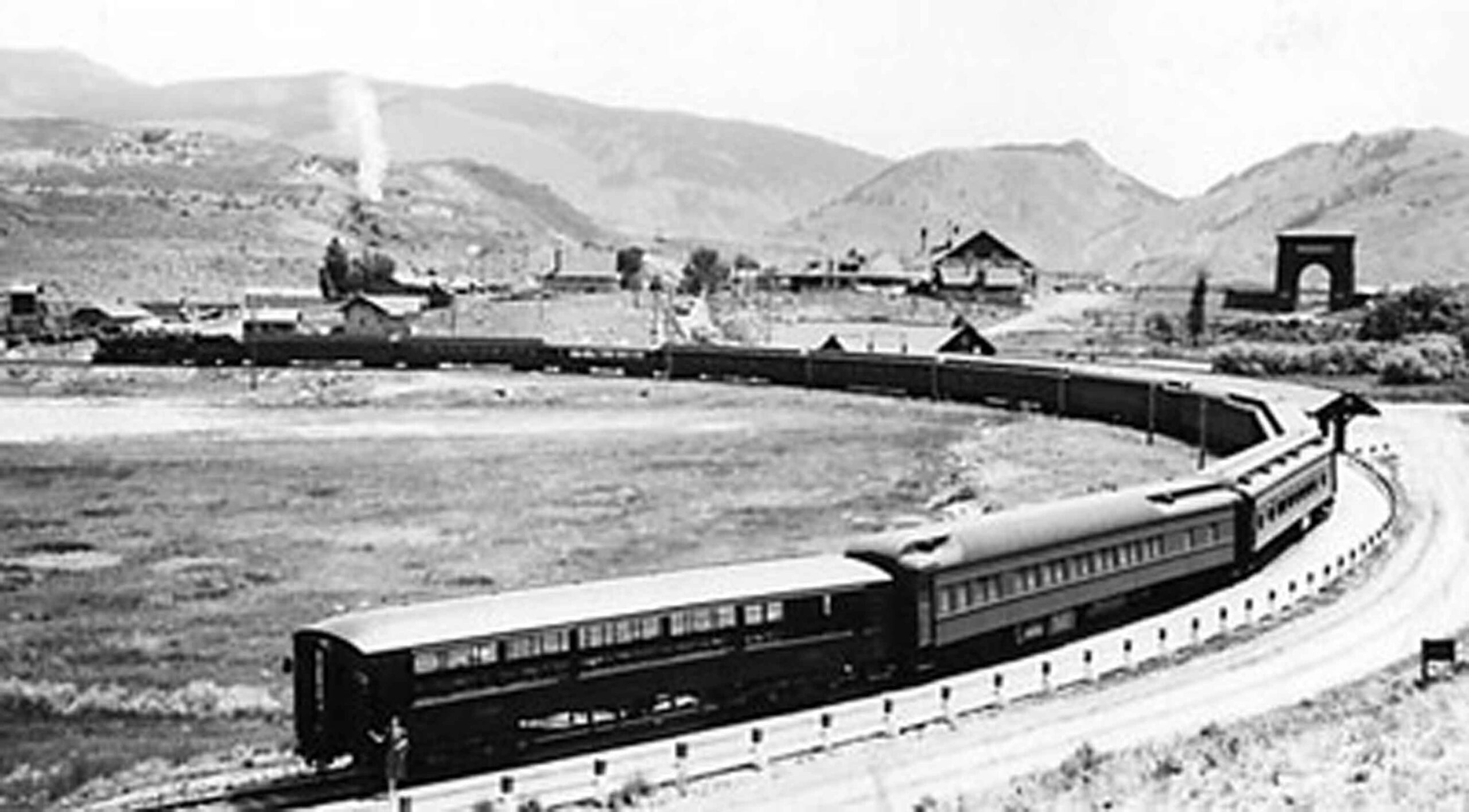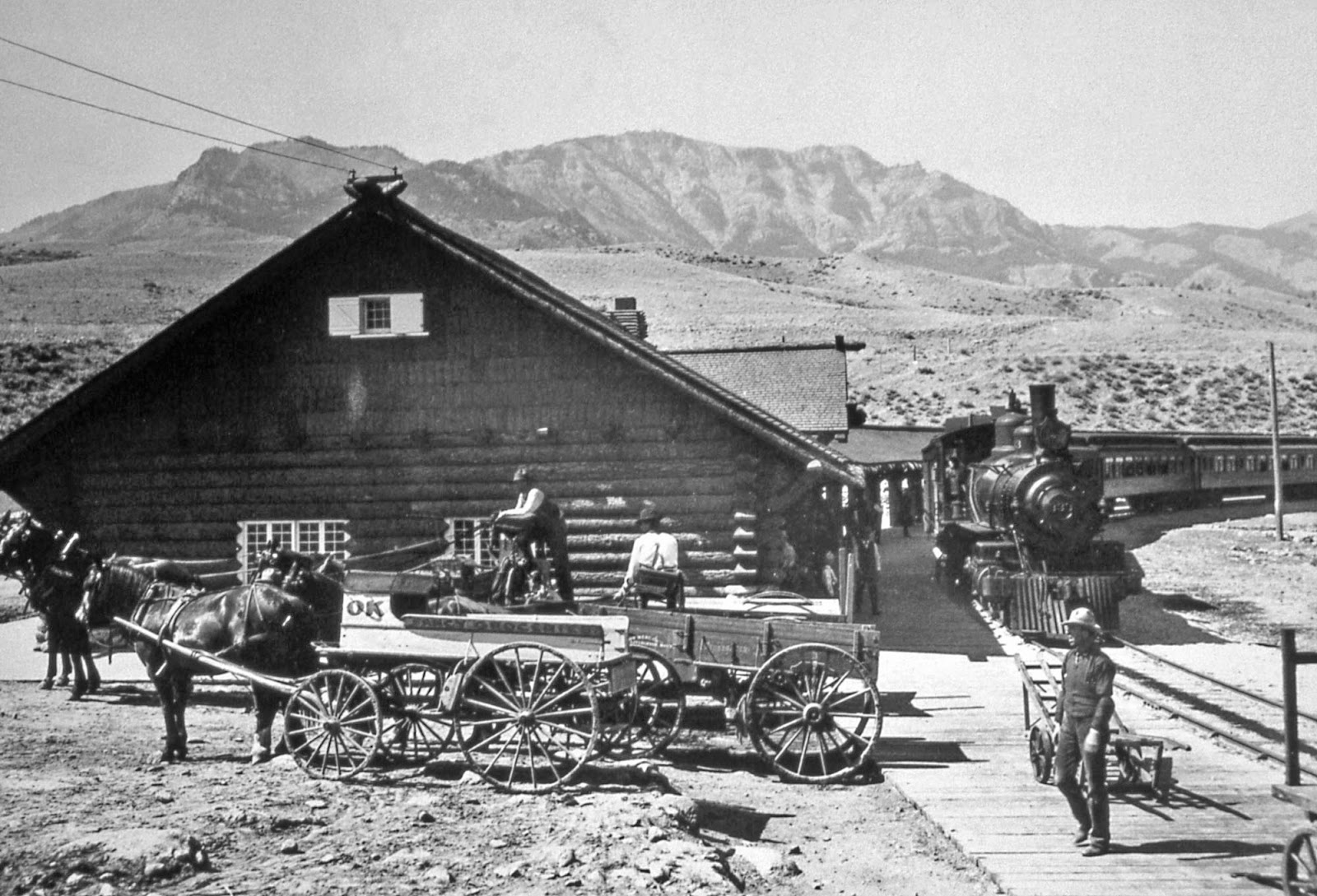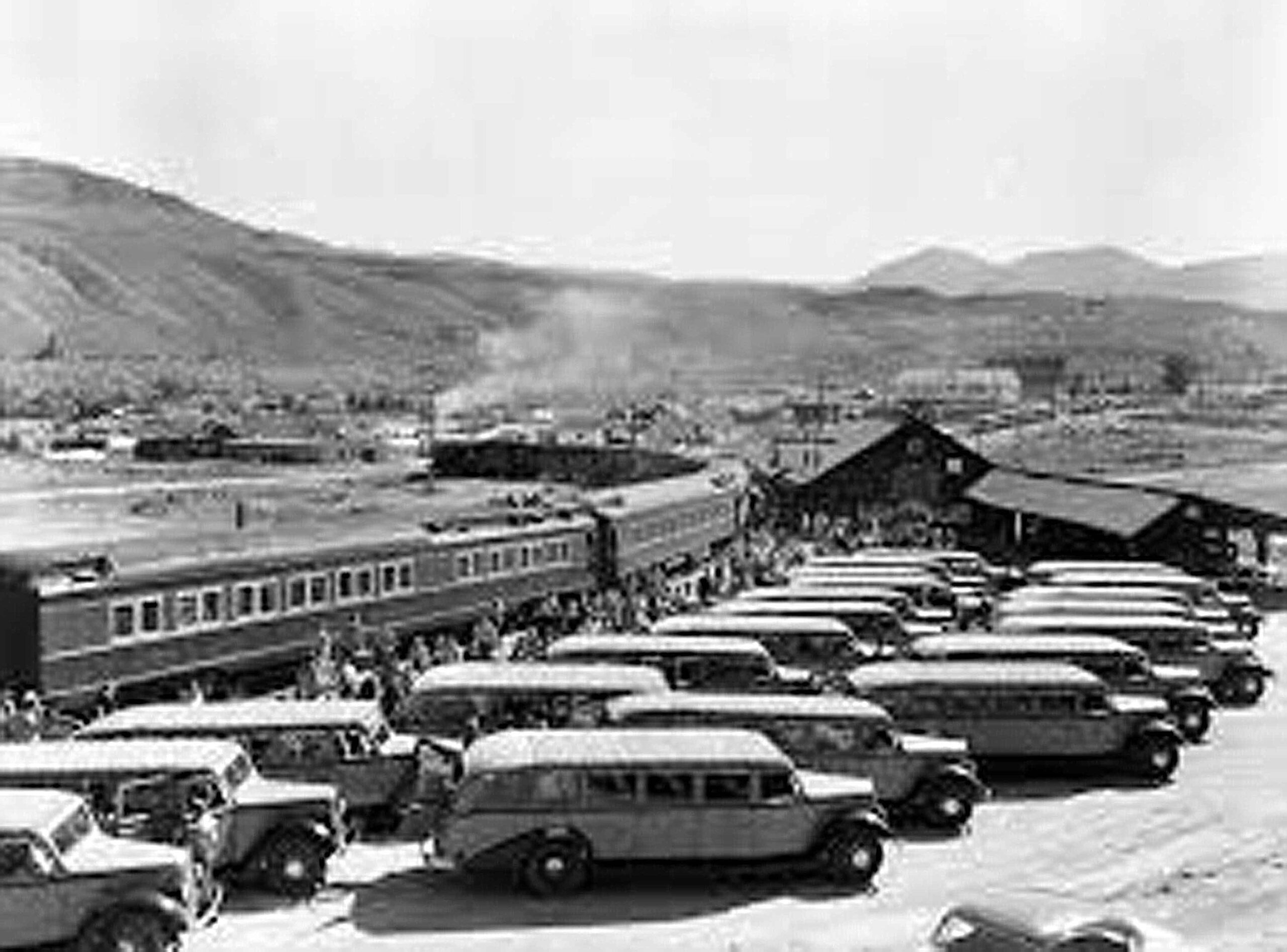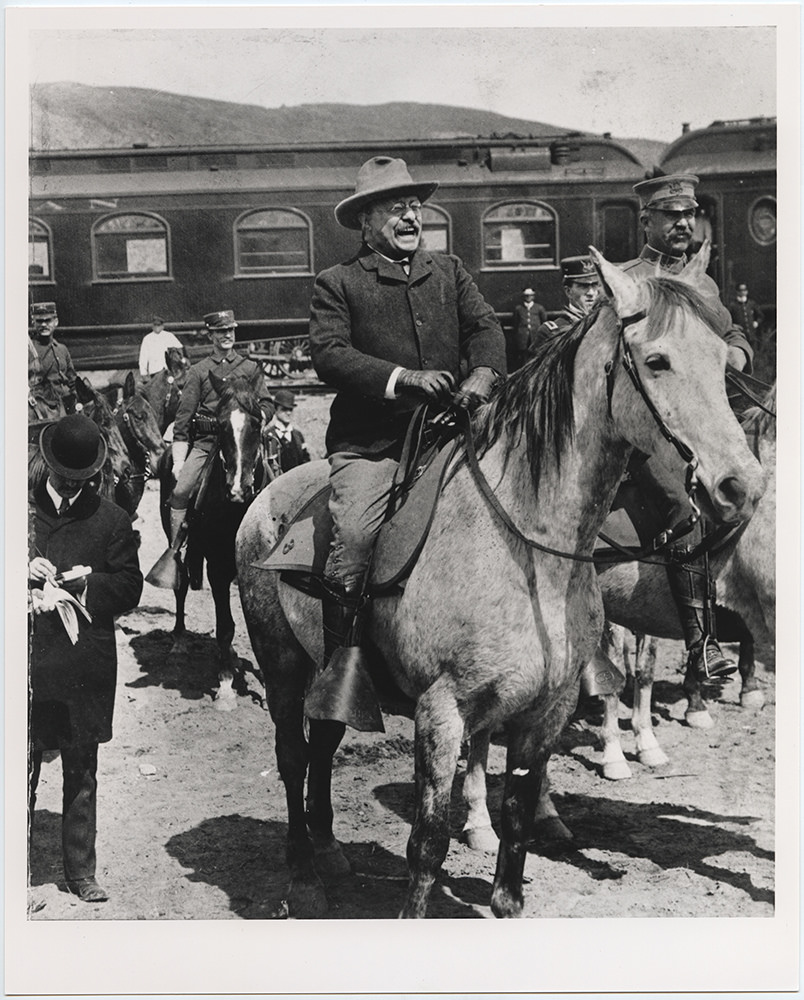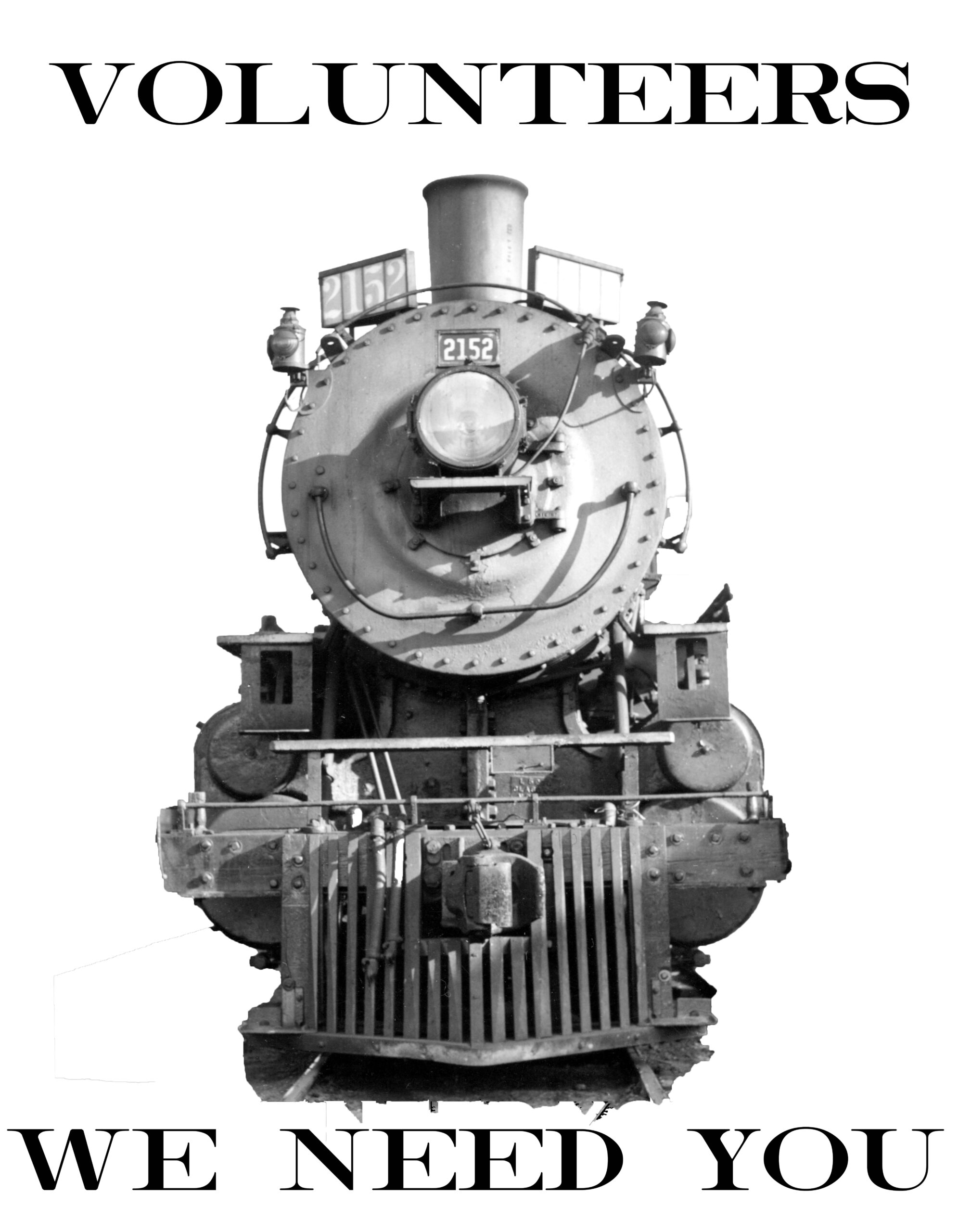
Early record show the 2152 operating passenger service out of St Paul, the eastern terminus of the NP. Gradually she worked her way westward and was hauling passengers to Yellowstone National Park. Gardner was considered the gateway to the park as it was just outside. A 55 mile spur line connected Gardner with Livingston, the main line for the NP.
The double headed train arrives at the Gardner Depot. Double heading is a term when 2 locomotives are hooked together. This would be done when speed is needed for a long or heavy train. Sometimes in the winter a second locomotive is needed to provide steam for heating the passenger cars
Please note the second locomotive, the 2152
The Yellowstone Arch is the entry way to the north end of the park. Teddy Roosevelt in 1903 laid the cornerstone of this arch.
The train after unloading and loading passengers circle around a loop to return to Livingston.
Pictures were taken by Ron Nixon on July 7,1941 and archived by the Museum of the Rockies.
Autos would soon replace horses and wagons. The National Park service invested in a fleet of autos for the purpose of giving tours. Today Glacier National Park has preserved and maintained these stile of vehicles for transporting visitors on the Highway to the Sun. (see more of these cars).
Teddy Roosevelt visited Yellowstone in April 24 1903 and dedicated The Roosevelt Arch, that is the entrance to the park from Gardner.
Editors Note: a month and a day later, May 25, Teddy Roosevelt visited Yakima WA just north of Toppenish, while campaigning for president. Yes, it was the Northern Pacific that brought him there.
